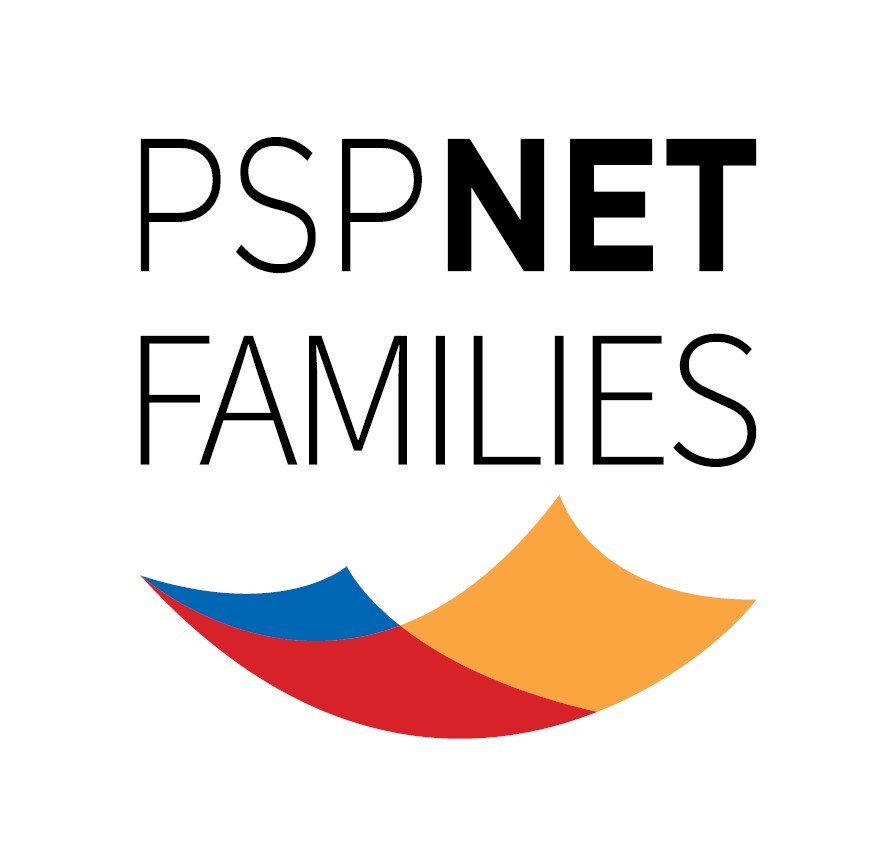Shifting barriers around posttraumatic stress injuries (PTSI) and posttraumatic stress disorder (PTSD)
Panel discussion: Shifting barriers – Destigmatizing posttraumatic stress injuries among first responders and other public safety personnel
Watch nowJune is Posttraumatic Stress Disorder (PTSD) Awareness Month
Learn morePSPNET Families is a wellbeing hub of information and resources for PSP families
Learn morePSPNET’s PTSD Course for PSP was designed with first responders and other public safety personnel
Learn morePlaylist – video resources about posttraumatic stress injury
Watch nowPTSI/PTSD and Public Safety Personnel
In Canada it is estimated that up to 2.3% of the general population is dealing with posttraumatic stress disorder (PTSD) at any moment. Among first responders and other public service personnel (PSP), such as correctional service workers, fire services personnel, Indigenous emergency managers, operational intelligence personnel, paramedics, police officers, public safety communicators, and search and rescue personnel, that figure is much higher. A 2018 study of a large sample of Canadian PSP found that approximately 44.5% screened positive for one or more mental health disorders, primarily PTSD (23.2 %) or major depressive disorder (26.4%).
A growing body of research highlights the ways that frequent exposure to trauma can negatively impact the mental health of first responders and other public safety personnel, and contribute to the development of operational, or posttraumatic stress injuries (PTSI).
Along with struggling with symptoms of PTSD, PSP may also feel the weight of stigma from their co-workers, organizations, or the public. This stigma can stop those who are suffering from seeking help or asking for support. Understanding the reality of symptoms and debunking common misconceptions about PTSD can help improve the lives of people who are struggling.
In support of PTSD Awareness Month (June), we’re sharing resources about PTSI and PTSD, in order to connect PSP and their families with mental health information and treatment, and to help destigmatize mental health challenges. We can all contribute to shifting the barriers around seeking help for posttraumatic stress injuries.

PTSD - The basics
Clinical Psychologist Dr. Megan McElheran highlights key points about PTSD in this 3 minute video.

PTSD - Beyond the basics
Clinical Psychologist Dr. Megan McElheran delves deeper into the topic of PTSD in this one hour video. What exactly is PTSD? What causes it and how can it be treated?

A brief history of PTSD
The year 2020 marked the 40th anniversary of the formal recognition PTSD as a diagnosed mental health disorder. Dr. R. Nicholas Carleton provides a brief history of our progress in understanding PTSD. (Trigger warning – war imagery and brief footage)
What are posttraumatic stress injuries? What is posttraumatic stress disorder?
Public safety personnel are frequently exposed to potentially psychologically traumatic events (PPTE) as a function of their service, at a rate much higher than that of the global, or Canadian general population. PPTE can include direct or indirect exposure to threats to oneself, or to others, including, but not limited to death, serious injury, or violence. Frequent exposure to PPTE puts PSP at increased risk for developing one or more posttraumatic stress injuries (PTSI).
PTSI refers to the mental health conditions that a person may experience as a result of exposure to one or more PPTE. As such, PTSI can include PTSD, as well as an array of other mental health disorders, such as: major depressive disorder (MDD), generalized anxiety disorder (GAD), social anxiety disorder (SAD), and panic disorder (PD). While PTSI is a non-clinical term, PSP, researchers, and clinicians sometimes favour the term ‘injury’ to ‘disorder’, as a means of reducing stigma. For many, the word ‘injury’ better acknowledges the circumstances of occupational trauma surrounding the psychological distress that PSP experience.
More information:
- Glossary of terms: A shared understanding of the common terms used to describe psychological trauma – Postraumatic stress disorder
- Glossary of terms: A shared understanding of the common terms used to describe psychological trauma – Postraumatic stress injury
Symptoms of PTSD
Re-experiencing trauma
A hallmark symptom of PTSD involves re-experiencing the traumatic event. This may occur in the form of unwanted and upsetting memories of the event, or repeated and distressing nightmares. Some people have more intense re-experiencing events called “flashbacks,” where they might feel like they are actually experiencing the trauma again.
Avoidance
Avoidance symptoms include a strong urge to stay away from reminders of a potentially traumatic event. These reminders might include people, places, objects, or activities which are related to the trauma in some way. Some people also go out of their way to avoid thinking or talking about the event.
Changes in thoughts and mood
Potentially traumatic events can change how people think about themselves, other people, and their world. The changes can include feeling hopeless, detached from loved ones, or difficulty experiencing positive emotions – or sometimes any emotions at all.
Changes in physical and emotional reactions
Potentially traumatic events can also cause significant distress and physical symptoms. People can become hypervigilent, or more watchful, on guard, easily startled, or frightened. Difficulties sleeping or trouble concentrating can be caused by diverse stress, up to and including traumatic stress. In addition, potentially traumatic events can cause increased feelings of anger, irritability, shame, or guilt.
Many people can experience some of the above symptoms after a potentially traumatic event but do not go on to develop PTSD. However, if someone experiences several of the above symptoms for longer than a month, and the symptoms are extremely distressing or interfere with work, relationships, or other important areas of life, they may be experiencing PTSD and may benefit from appropriate mental health care.
If you think that you or someone you know might be experiencing these symptoms, click here to take a short, anonymous questionnaire to screen for PTSD.
More information:
- National Centre for PTSD (US) – What is PTSD?
- Canadian Association for Mental Health – Postraumatic stress disorder
More on Trauma and PPTE
When a mental health professional is evaluating whether someone has PTSD, they often consider the experience or situation thought to have triggered the symptoms. A traumatic event is different than normal daily stress or pressure. Potential traumas usually involve experiencing or witnessing severe injury, feeling that your life or somebody else’s life is in danger, or witnessing an intentional or accidental death. Events such as natural disasters can also be traumatic.
The kinds of potentially traumatic events that can lead to PTSD are often experienced in person, but not always. For example, some work involves repeated exposure to stories of injury or death – like being a call centre operator for 911 or a crime scene photo developer for a police unit.
Not everybody who experiences a traumatic event develops PTSD. Indeed, in the North American general population most people (i.e., 50-90%) will experience one or more potentially traumatic events during their lifetime; however, relatively few (i.e., 5-10%) will develop PTSD. Even people who are in careers where exposure to potentially traumatic events may be more common, like public safety personnel, are not necessarily going to develop PTSD. There are responses to potentially traumatic events that can be considered fairly normal. For example, you might feel unsettled or uncomfortable at first, but most people recover and return to normal within a few days; however, some people do go on to have longer-lasting challenges after experiencing a potentially traumatic event.
More information:
- Glossary of terms: A shared understanding of the common terms used to describe psychological trauma – Potentially psychologically traumatic event (PPTE)
- Glossary of terms: A shared understanding of the common terms used to describe psychological trauma – trauma/traumatic injury
Destigmatizing PTSI and PTSD
Despite the relatively high proportion of mental health injury experienced by PSP, stigma can present a significant barrier to treatment-seeking and organizational culture change around mental health. The pressure to maintain an image of strength and stoicism can be high within PSP professions, which can lead PSP to avoid seeking treatment or support for fear of retribution by peers or by their administration.
Stigma can take various forms. Structural stigma can perpetuate organizational policies and practices that are harmful or that disadvantage individuals with mental health challenges. Public, or interpersonal stigma refers to negative attitudes held by the public about mental health challenges. Within PSP communities, interpersonal stigma can increase avoidance and mistrust of those who report mental health injury. Individuals can self-stigmatize with negative beliefs around mental health that impede their own help-seeking. Finally, stigma-by-association can occur when negative attitudes around mental health challenges are transferred to the people, as well as the programs and supports close to individuals experiencing mental health injury.
Mental illness continues to be highly stigmatized in our society, despite public awareness campaigns and more frank public discussion around mental health. The ways that stigma interacts with, or impedes, treatment-seeking behaviour is complex, and varies across sectors. The impact of stigma on those with mental health challenges can be particularly painful, as these individuals experience the social disapproval, and the shame that the stigmatization creates, in addition to the symptoms of their mental health condition itself.
More information:
- Glossary of terms: A shared understanding of the common terms used to describe psychological trauma – Stigma
Treatment and recovery

PSPNET
Through PSPNET, CIPSRT is playing a leading role in developing and offering accessible, secure, and innovative evidence-based interventions to current and former PSP, their organizations, and their families through internet-delivered cognitive behavioural therapy. PSPNET is specifically designed to meet the unique needs of PSP, is confidential, and free to access. You do not need a referral.

PSP Mental Health Website
This online resource features over 300 programs and resources to assist PSP and their families. The programs and resources can be filtered by location, cost, delivery method, and more. Visit the website to find the program right for you.

Peer-on-call
PeerOnCall and PeerOnCall Support, the mobile health apps customized for Canadian PSP, have been created to promote early intervention, mental health support, and psychological health and safety in public safety workplaces.
Information on evidence-based treatments
There are many treatments available for PTSD that have been supported by several rigorous peer-reviewed research projects (i.e., empirically-supported treatments). Such therapies, when provided by appropriately trained professionals, can help reduce PTSD symptoms, improve quality of life, and develop skills maintaining good mental health.
Cognitive Processing Therapy (CPT)
Traumatic experiences can have ripple effects through many areas of life. Once the effects are identified, a CPT therapist can help a person to work towards solutions and generate a more adaptive way of moving forward. CPT can help a person to think differently about the negative thoughts they have regarding a trauma. Doing so can change how a person feels about and interacts with the trauma, which can reduce the impact of PTSD symptoms in many different parts of a person’s life. CPT involves talking with a therapist about the negative thoughts related to a trauma and doing short writing assignments.
Eye-Movement Desensitization and Reprocessing (EMDR)
Traumatic experiences can be difficult to make sense of and change the way a person thinks about the world. For some people discussing the trauma can be too difficult. Eye-Movement Desensitization and Reprocessing (EMDR) can help a person process and make sense of a trauma, which can help reduce PTSD symptoms. EMDR involves a person recalling a trauma in their own mind while paying attention to a back-and-forth movement or sound (e.g., a finger waving side to side, a light, a tone) produced by a therapist.
In this webinar, Dr. Suzette Brémault-Phillips and Dr. Chelsea Jones discuss virtual reality supported psychotherapy for PSP.
Prolonged Exposure (PE)
Imagine a child who is very afraid of swimming – how would you help the child overcome their fear? Perhaps, “start small with a sprinkler, work up to a shallow pool, eventually working up to a deeper pool, and perhaps eventually to a lake or ocean”? Essentially you want to help them gradually develop new skills, confront their fears, and decrease their anxiety. Prolonged Exposure, or PE, helps a person confront difficulties with trauma in a similar fashion. Once a person has identified their challenges, developed their goals, and is comfortable enough with their therapist, they can gradually confront their trauma with help from their therapist. Gradual exposure to the trauma story (starting small and working up slowly) in a safe and therapeutic environment can help to reduce PTSD symptoms. Therapists can help to make sense of traumatic experiences and find ways to move forward towards an improved quality of life.
More information
- Canadian Association for Mental Health – Posttraumatic stress disorder
- National Centre for PTSD (US) – Understanding PTSD and PTSD treatment
- CIPSRT – Six steps to finding a clinician

Self-assessment tools
How is your mental health today?
This anonymous online screening tool can help you identify whether you are experiencing symptoms of mood disorders, anxiety disorders, or post-traumatic stress disorder.

Video: Posttraumatic growth
Some people who go through trauma describe an experience called posttraumatic growth: a sense of strengthened relationships, rebalanced priorities, deepened self-confidence, and renewed appreciation for life. How does posttraumatic growth happen? Can it be purposely nurtured? ?In this video Dr. Samantha Horswill explores this topic with a focus on PSP and trauma.

Fact sheet on PTSI
This downloadable fact sheet explores the impacts of PTSI on PSP and military members and offers resources for coping with mental health challenges.

Video short: Coping with PTSI
‘Some days will be easier than others, and that’s ok.’
Watch a 2-minute video on strategies for coping with PTSI.

Video short: PTSI and PSP
‘You’re an ordinary person being asked to cope with extraordinary things.’
Watch a 2-minute video explaining the impacts of trauma and PTSI on PSP.

Video short: Peer support
‘Connecting with someone who has walked a similar path can help you feel validated, understood, and less lonely.’
Watch a two-minute video exploring the value of peer-to-peer support for PSP.
Resources for families and friends

PSPNET Families
When one member of the family serves, the whole family serves. PSPNET Families is a wellbeing hub offering information, strategies, and a wellbeing course – all tailored for PSP families.

Video Short: Self-support
‘Sharing a home with someone who has a PTSI can be extremely challenging.’
Watch a two-minute video on supporting yourself when a loved one is struggling.

Fact sheet: Supporting a coworker
Download a fact sheet that explains how PSP colleagues and friends can support one another in mental health challenges.
In their own words
PSP from various sectors discuss their own experiences with PTSI and PTSD.

Brunu (RCMP)
‘You’re an ordinary person who is asked to do extraordinary things, over and over again. And for a lot of us there is a price to pay for that.’

Pam (Emergency communications)
‘This is me telling my story of how vicarious trauma, of how compassion fatigue, infiltrated my life.’

Amber (Paramedic)
‘When I got home from work that day, my husband looked at me and instantly said, “You don’t look ok. Are we talking or are we not talking?”‘

Todd (Fire and Rescue)
‘No one really knew at work. There wasn’t really barriers, other than the perceived stigma from myself. I thought, if I let anyone know they’ll think about me differently.’

Amanda, Laryssa, and Ian (family of PSP)
‘A few years after he started working in corrections, there was a noticeable difference in his demeanour, as well as his perspective of the world.’

Lauren (Corrections)
‘This is an injury. This is not who you are. This is not something that you did, this is something that happened to you.’
References
Andrews KL, Jamshidi L, Nisbet J, et al. Potentially Psychologically Traumatic Event Exposure Histories of new Royal Canadian Mounted Police Cadets. The Canadian Journal of Psychiatry. 2023;68(9):663-681. doi:10.1177/07067437221149467
Carleton, R. N., Afifi, T. O., Turner, S., Taillieu, T., Duranceau, S.,LeBouthillier, D. M., . . . Asmundson, G. J. G. (2018). Mental disorder symptoms among public safety personnel. Canadian Journal of Psychiatry, 63, 54 – 64. http://dx.doi.org/10.1177/0706743717723825
Heber A, Testa V, Groll D, Ritchie K, Tam-Seto L, Mulligan A, Sullo E, Schick A, Bose E, Jabbari Y, Lopes J, Carleton RN. Glossary of terms: A shared understanding of the common terms used to describe psychological trauma, version 3.0. Health Promot Chronic Dis Prev Can. 2023;43(10/11). https://doi.org/10.24095/hpcdp.43.10/11.09
Krakauer RL, Stelnicki AM, Carleton RN. Examining Mental Health Knowledge, Stigma, and Service Use Intentions Among Public Safety Personnel. Front Psychol. 2020 May 29;11:949. doi: 10.3389/fpsyg.2020.00949. PMID: 32547443; PMCID: PMC7273931. https://www.ncbi.nlm.nih.gov/pmc/articles/PMC7273931/